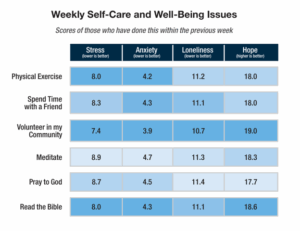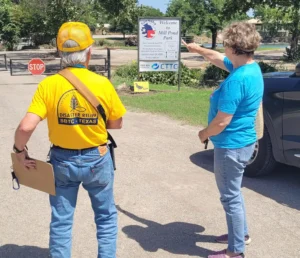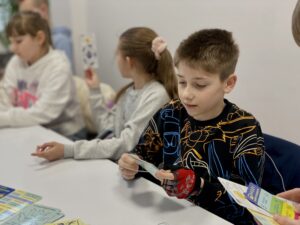
NASHVILLE, Tenn. (BP)–So-called nightmare adoption scenarios are rare in the real world, but one is set to play out on the big screen Sept. 24 when “Like Dandelion Dust,” based on a Karen Kingsbury best-selling novel, releases nationally.
The movie has a gripping storyline that many viewers will find compelling: a couple adopts a boy at birth, only to discover six years later that the birth parents are trying to get him back. The legal twist? The birth father, who was in jail that whole time and didn’t even know he had a son until he was released, learns that his signature consenting to the adoption was forged. Because it was forged, the adoptive parents have no legal rights to the child. And, for the rest of the movie, the two couples fight for the 6-year-old boy, who, amazingly, didn’t even know he was adopted.
As an adoptive parent of a 2-year-old boy, I love movies about adoption. “Bella” still ranks among my all-time favorites. Like Dandelion Dust, though, is a different matter.
Although Like Dandelion Dust (PG-13) is an amazingly well-done movie with stellar acting and several strong points — USA Today called in the next “Blind Side” — it likely won’t serve to encourage potential adoptive parents. I was troubled after watching the trailer, and viewing an advanced copy of the movie didn’t change my mind.
Watching it before you adopt is tantamount to watching “United 93” before you fly.
Movies have a tendency to turn what is fictional into apparent fact, at least in the minds of some. Adoption experts tell me that adoption-gone-wrong scenarios are very, very rare, and the head of one agency said they account for less than 1 percent of all domestic adoptions in America. But in some U.S. city in the coming months, a family member or friend of a couple considering adoption is bound to say, “Have you seen Like Dandelion Dust?”
The nightmare plot portrayed in Like Dandelion Dust is far-fetched and will serve to plant doubts in the minds of potential adoptive parents who already struggle enough with such emotions. For potential adoptive families, the biggest legal question always is: Will the birth mother follow through? Like Dandelion Dust adds another one: Did anyone lie?
It’s not enjoyable in real life to watch couples battle over a child, and it’s no more fun on the big screen.
The domestic adoption process works for both sides because there is a date of finality, a date when all legal ties are severed with the biological family and the child becomes a member of the adoptive family for good. That date typically is several days after the birth mother signs — a time known as the “waiting period,” when she can in fact change her mind. After the waiting period, all legal ties are cut. If no such date existed, few couples would ever adopt and more and more children would end up under state guardianship. Laws vary from state to state, but they are written with the goal of balancing the needs of the birth parents with the needs of the adoptive parents. It’s no easy task.
Like Dandelion Dust gives a nod to such laws but then tosses in a series of “what ifs?” that had my stomach churning.
I am guessing that the general public will enjoy Like Dandelion Dust while those in the adoption community will be much more uncomfortable. The general public likely also will overlook a storyline that was even more unbelievable: The boy was clueless as to his background.
Adoption agencies encourage adoptive couples to be honest with their children, telling them about their origins from the moment they learn to talk. It’s the right thing to do and it avoids having to schedule “the talk” when they’re older.
My 2-year-old son knows he was adopted. He doesn’t fully know what that means, and we put it in his own language. (He needed a mommy and a daddy and when we learned about him we said, “Yay!”). He’ll learn more and more as he gets older.
Like Dandelion Dust does have its strong points for the adoption community. The love the adoptive parents (the Campbells) show for their 6-year-old son Joey is real — so real they will go to any lengths to keep him. When I go home after work and my son welcomes me at the door, ready to play, I don’t think to myself, “There’s my adopted son.” He’s simply “my son,” and the only time I think about his background is every couple of weeks when I tell him his adoption story. Similarly, the Campbells don’t view Joey as their “second-best” — a point that could go a long way to helping people understand the love bond within an adoptive family.
The movie also does a fine job showing the struggles that birth parents — normally, single birth moms — experience. I can’t imagine what it would be like to have a 6-year-old son taken from me, but I also can’t imagine what it would be like to sign over my legal rights and voluntarily give my child to another couple. The film shows both. Although difficult to watch, it gave me a greater appreciation for what my son’s birth mother did.
The film’s final few scenes are another strength. It’s perhaps the most emotionally laden finale I have ever seen in a theatrical release.
Like Dandelion Dust is a mixed bag for those inside and outside the adoption movement. Adults who were adopted probably will enjoy it. After all, it shows the love that both sets of parents had for the child. Others in the adoption community, though, may have a different perspective.
The movie has won several awards at film festivals. If you see it, keep in mind that it is indeed portraying a very rare scenario. And when you’re done, go rent “Bella.”
–30–
Michael Foust is an assistant editor of Baptist Press. Like Dandelion Dust is rated PG-13 for mature thematic elements including domestic violence and alcohol abuse (the movie has no language, sexuality or nudity).
















